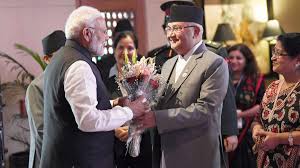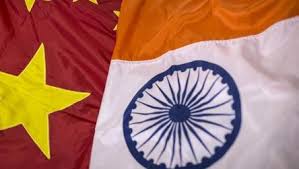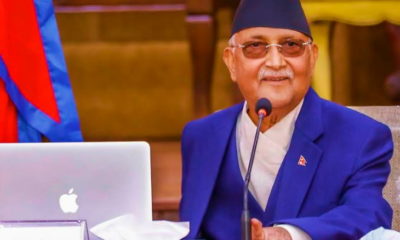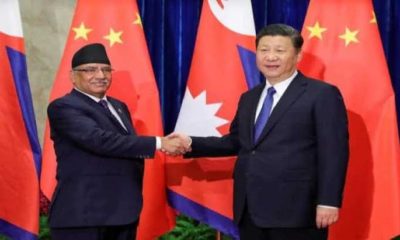Feature
Nepal, India propose to build six power corridors

 Kathmandu:Nepal and India propose to construct at least six cross-border power corridors to ensure trading in energy between the two close neighbours on a long-term basis.
Kathmandu:Nepal and India propose to construct at least six cross-border power corridors to ensure trading in energy between the two close neighbours on a long-term basis.
These 400-kV lines will be constructed on the Attariya-Uttarakhand, Lamki-Tikuniya, Kohalpur-Rupaidiha, Butwal-Gorakhpur, Muzaffarpur-Dhalkebar and Inaruwa-Bihar corridors.
A six-member joint technical team formed to prepare a master plan for such power corridors identified the six points on the Nepal-India border in accordance with the Power Trade Agreement (PTA) signed in 2014.
The energy secretaries of Nepal and India are scheduled to meet in Kathmandu on Wednesday and Thursday to approve the master plan prepared by this technical team, Nepal’s Energy Ministry said here.
Nepal has a huge hydropower potential — theoretically estimated at 83,000 MW — with the perennial nature of Nepali rivers and the steep gradient of the country’s topography providing ideal conditions for the development of some of the world’s largest hydroelectric projects in the Himalayan nation.
India is the closest and natural market for Nepal’s hydel power.
Conservative estimates place Nepal’s economically feasible hydropower potential at approximately 42,000 MW — of which it has developed barely 700 MW.
Officials told IANS that these proposed lines will transmit electricity to India, in addition to the Karnali-Chisapani (10,800 MW) and Pancheshwor (6,720 MW) multi-purpose projects that have their own dedicated transmission lines.
“Synchronisation and installation of energy corridors were the key intricacies of the PTA and we have to set up transmission lines first,” Nepal’s Energy Secretary Suman Sharma, leading the Nepali delegation to the talks, told media persons ahead of the meeting.
Power Secretary Pradeep Kumar Pujari is leading the Indian delegation.
At present, a 400-kV transmission line on the Muzaffarpur-Dhalkebar route is under construction. With its completion, Nepal will soon be able to import 90 MW electricity from India to ease its own power crisis.
Entertainment
Meghalaya Reserves Legalized Gambling and Sports Betting for Tourists

The State Scores Extra High on Gaming-Friendly Industry Index
Meghalaya scored 92.85 out of 100 possible points in a Gaming Industry Index and proved to be India’s most gaming-friendly state following its recent profound legislation changes over the field allowing land-based and online gaming, including games of chance, under a licensing regime.
The index by the UK India Business Council (UKIBC) uses a scale of 0 to 100 to measure the level of legalisation on gambling and betting achieved by a state based on the scores over a set of seven different games – lottery, horse racing, betting on sports, poker, rummy, casino and fantasy sports
Starting from February last year, Meghalaya became the third state in India’s northeast to legalise gambling and betting after Sikkim and Nagaland. After consultations with the UKIBC, the state proceeded with the adoption of the Meghalaya Regulation of Gaming Act, 2021 and the nullification of the Meghalaya Prevention of Gambling Act, 1970. Subsequently in December, the Meghalaya Regulation of Gaming Rules, 2021 were notified and came into force.
All for the Tourists
The move to legalise and license various forms of offline and online betting and gambling in Meghalaya is aimed at boosting tourism and creating jobs, and altogether raising taxation revenues for the northeastern state. At the same time, the opportunities to bet and gamble legally will be reserved only for tourists and visitors.
“We came out with a Gaming Act and subsequently framed the Regulation of Gaming Rules, 2021. The government will accordingly issue licenses to operate games of skill and chance, both online and offline,” said James P. K. Sangma, Meghalaya State Law and Taxation Minister speaking in the capital city of Shillong. “But the legalized gambling and gaming will only be for tourists and not residents of Meghalaya,” he continued.
To be allowed to play, tourists and people visiting the state for work or business purposes will have to prove their non-resident status by presenting appropriate documents, in a process similar to a bank KYC (Know Your Customer) procedure.
Meghalaya Reaches Out to a Vast Market
With 140 millions of people in India estimated to bet regularly on sports, and a total of 370 million desi bettors around prominent sporting events, as per data from one of the latest reports by Esse N Videri, Meghalaya is set to reach out and take a piece of a vast market.
Estimates on the financial value of India’s sports betting market, combined across all types of offline channels and online sports and cricket predictions and betting platforms, speak about amounts between $130 and $150 billion (roughly between ₹9.7 and ₹11.5 lakh crore).
Andhra Pradesh, Telangana and Delhi are shown to deliver the highest number of bettors and Meghalaya can count on substantial tourists flow from their betting circles. The sports betting communities of Karnataka, Maharashtra, Uttar Pradesh and Haryana are also not to be underestimated.
Among the sports, cricket is most popular, registering 68 percent of the total bet count analyzed by Esse N Videri. Football takes second position with 11 percent of the bets, followed by betting on FIFA at 7 percent and on eCricket at 5 percent. The last position in the Top 5 of popular sports for betting in India is taken by tennis with 3 percent of the bet count.
Local Citizens will Still have Their Teer Betting
Meghalaya residents will still be permitted to participate in teer betting over arrow-shooting results. Teer is a traditional method of gambling, somewhat similar to a lottery draw, and held under the rules of the Meghalaya Regulation of the Game of Arrow Shooting and the Sale of Teer Tickets Act, 2018.
Teer includes bettors wagering on the number of arrows that reach the target which is placed about 50 meters away from a team of 20 archers positioned in a semicircle.
The archers shoot volleys of arrows at the target for ten minutes, and players place their bets choosing a number between 0 and 99 trying to guess the last two digits of the number of arrows that successfully pierce the target.
If, for example, the number of hits is 256, anyone who has bet on 56 wins an amount eight times bigger than their wager.























